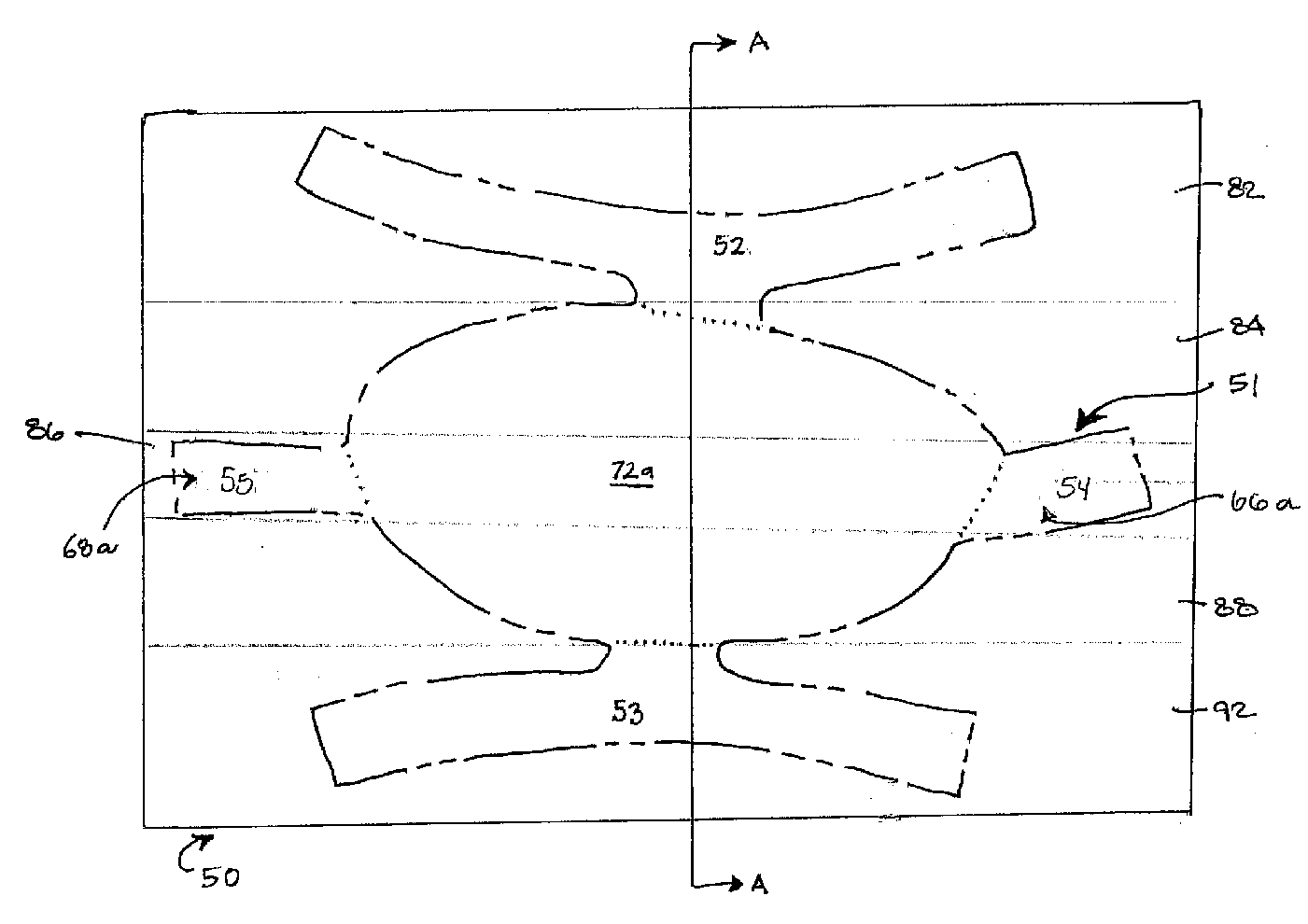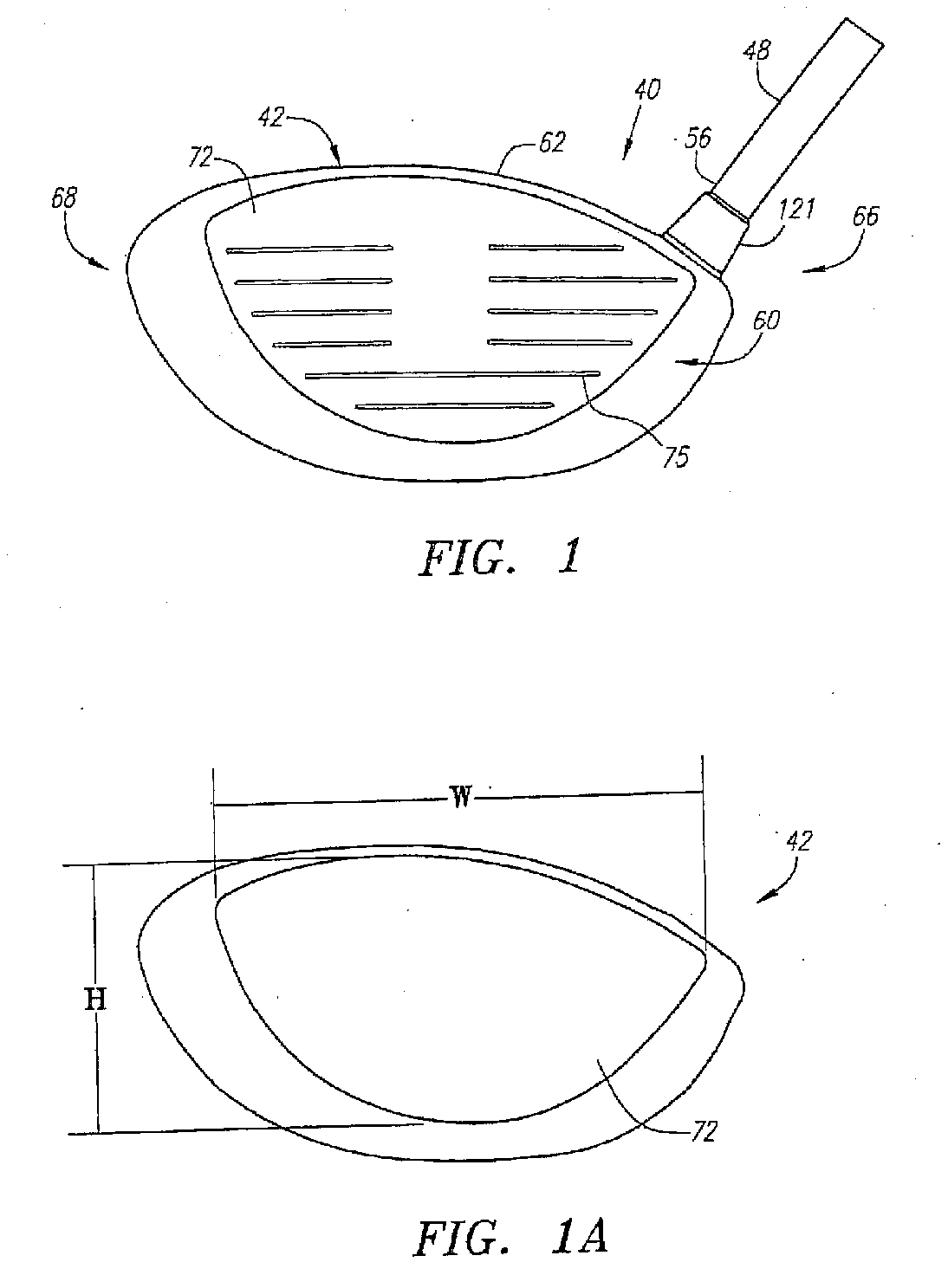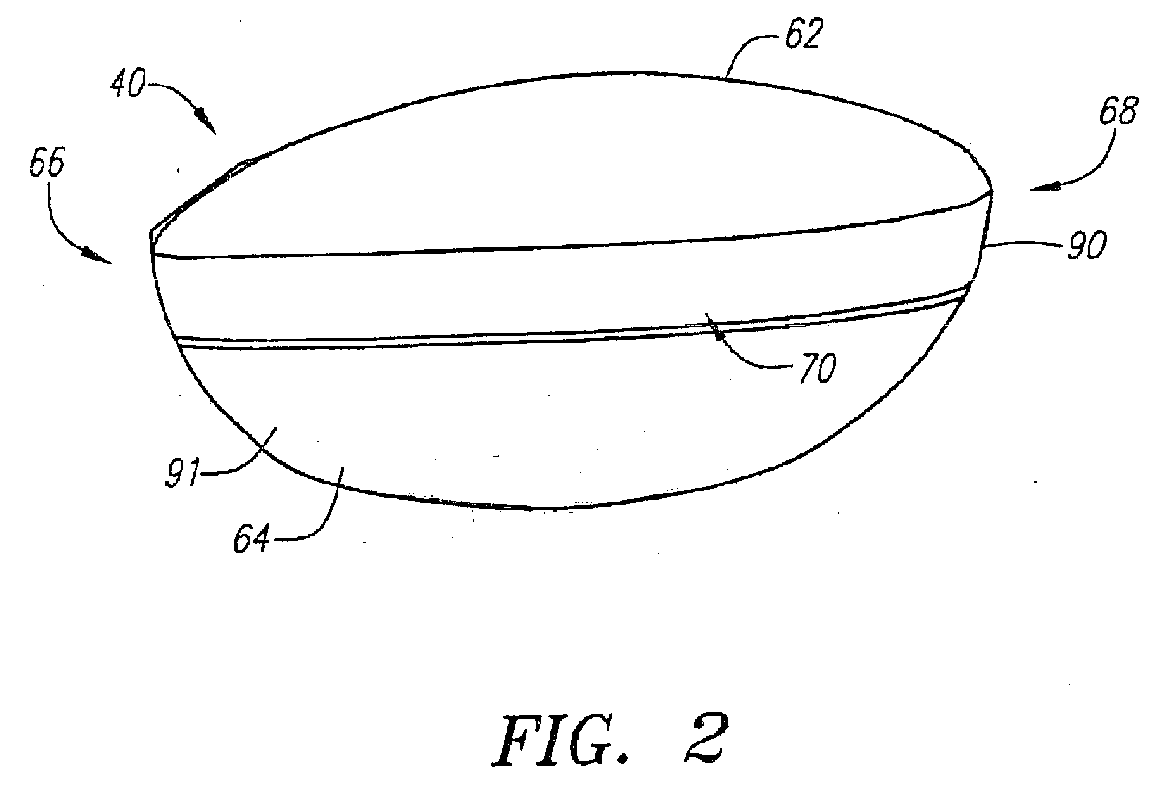Method for producing a golf club wood
a golf club and manufacturing method technology, applied in the field of golf club manufacturing, can solve the problems of increased energy transfer problem, increased deformation of golf balls, energy loss, etc., and achieve the effects of reducing face mass, reducing cost, and increasing striking face complian
- Summary
- Abstract
- Description
- Claims
- Application Information
AI Technical Summary
Benefits of technology
Problems solved by technology
Method used
Image
Examples
Embodiment Construction
[0043] The present invention is directed at a method for producing a golf club head with an aft-body and a face component where the face component is formed from a customized sheet or strip of material. The face component has a front striking face and a return portion with a thin-walled flange and transition zone, which allow for greater compliance of the striking face during impact with a golf ball. The compliant striking face provides the golf club head with a high coefficient of restitution thereby enabling a golf ball hit with the golf club head of the present invention to travel a greater distance for a given club head speed. The coefficient of restitution is determined by the following equation: e=v2-v1U1-U2
[0044] wherein U1 is the club head velocity prior to impact; U2 is the golf ball velocity prior to impact which is zero; v1 is the club head velocity just after separation of the golf ball from the face of the club head; v2 is the golf ball velocity just after separation o...
PUM
| Property | Measurement | Unit |
|---|---|---|
| thickness | aaaaa | aaaaa |
| thickness | aaaaa | aaaaa |
| thickness | aaaaa | aaaaa |
Abstract
Description
Claims
Application Information
 Login to View More
Login to View More - R&D
- Intellectual Property
- Life Sciences
- Materials
- Tech Scout
- Unparalleled Data Quality
- Higher Quality Content
- 60% Fewer Hallucinations
Browse by: Latest US Patents, China's latest patents, Technical Efficacy Thesaurus, Application Domain, Technology Topic, Popular Technical Reports.
© 2025 PatSnap. All rights reserved.Legal|Privacy policy|Modern Slavery Act Transparency Statement|Sitemap|About US| Contact US: help@patsnap.com



